AAEON SBC-357/4M
Specifications
System Chipset
ALi M6117C
Form Factor
Half-Size ISA
Video Chipset
C&T 65545
Datasheet
Extracted Text
SBC-357/4M
386SX-40 Half-size CPU card with
LCD, SSD, & 4COMs
FCC STATEMENT
THIS DEVICE COMPLIES WITH PART 15 FCC RULES.
OPERATION IS SUBJECT TO THE FOLLOWING TWO
CONDITIONS: (1) THIS DEVICE MAY NOT CAUSE HARM-
FUL INTERFERENCE. (2) THIS DEVICE MUST ACCEPT
ANY INTERFERENCE RECEIVED INCLUDING INTERFER-
ENCE THAT MAY CAUSE UNDESIRED OPERATION.
THIS EQUIPMENT HAS BEEN TESTED AND FOUND TO
COMPLY WITH THE LIMITS FOR A CLASS "A" DIGITAL
DEVICE, PURSUANT TO PART 15 OF THE FCC RULES.
THESE LIMITS ARE DESIGNED TO PROVIDE REASON-
ABLE PROTECTION AGAINTST HARMFUL INTERFER-
ENCE WHEN THE EQUIPMENT IS OPERATED IN A
COMMERCIAL ENVIRONMENT. THIS EQUIPMENT
GENERATES, USES, AND CAN RADIATE RADIO FRE-
QUENCY ENERGY AND , IF NOT INSTATLLED AND USED
IN ACCORDANCE WITH THE INSTRUCTION MANUAL,
MAY CAUSE HARMFUL INTERFERENCE TO RADIO
COMMUNICATIONS. OPERATION OF THIS EQUIPMENT
IN A RESIDENTIAL AREA IS LIKELY TO CAUSE HARM-
FUL INTERFERENCE IN WHICH CASE THE USER
WILL BE REQUIRED TO CORRECT THE INTERFER-
ENCE AT HIS OWN EXPENSE.
Packing list
Before you begin installing your card, please make sure that the
following materials have been shipped:
• 1 supporting CD-ROM
• 1 SBC-357/4M CPU card
• 1 Hard disk drive (IDE) interface cable (40 pin)
• 1 Floppy disk drive interface cable (34 pin)
• 1 6-pin mini-DIN dual outlet adapter for keyboard and PS/2
mouse
• 1 parallel port adapter (26-25 pin) and dual outlet adapter kit
for COM port (10-9 pin) & (14-9 pin) adapter kit
• 2 serial adapter kit (9-10 Pin)
• 1 bag of screws and miscellaneous parts
If any of these items are missing or damaged, contact your distribu-
tor or sales representative immediately.
Notice
Dear Customer,
Thank you for purchasing the SBC-357/4M board. The user's
manual is designed to help you to get the most out of the SBC-357/
4M, please read it thoroughly before you install and use the board.
This product that you have purchased comes with a two years
limited warranty; EMAC will not be responsible for any misuse of
the product. Therefore, we strongly urge that user first read the
manual before using the product.
To receive the lastest version of the user manual, please visit our
Web site at:
U.S.A : www.emacinc.com
Contents
1 General Information........................... 1
Introduction............................................................................ 2
Features ................................................................................... 3
Specifications .......................................................................... 3
Board layout ........................................................................... 5
Card dimensions ..................................................................... 6
2 Installation .......................................... 7
Jumpers and connectors ........................................................ 8
Locating jumpers and connectors ......................................... 9
Setting jumpers ..................................................................... 10
Safety precautions ................................................................. 11
Installing DRAM (SIMMs) .................................................. 12
Installing SIMMs .................................................................... 12
Removing SIMMs ................................................................... 12
IDE hard drive connector (CN1) ......................................... 13
Floppy drive connector (CN2) ............................................. 15
Connecting the floppy drive .................................................... 15
Parallel (printer) connector (CN3) ...................................... 16
Installing the retaining bracket ................................................. 16
Display connectors (CN10, CN4) ........................................ 17
Reserved IR connector (CN5) .............................................. 19
Power connector (CN6) ........................................................ 19
Serial port connectors (CN7, CN8, CN9, CN11) ................ 20
KB and PS/2 mouse connector (CN12, CN14) ................... 22
Keyboard lock function (CN13) .......................................... 23
IDE LED (JP1) ...................................................................... 24
RS-232/422/485 setting select (JP2) ..................................... 24
Buzzer or external speaker (JP3) ......................................... 25
LCD SHF/ASHF clock select (JP4)................................. 25
System management Interrupt (JP5) ............................... 26
Hardware Reset (JP6)........................................................ 26
DiskOnChip installation (U15, JP8)................................. 27
LCD driving voltage select (JP9, JP10) ......................... 28
Clear CMOS selection (JP11)........................................28
Assign IRQ9 to VGA controller (JP12).........................29
DiskOnChip socket (U15) ................................................. 29
3 AMIBIOS Setup .....................................31
General information ............................................................ 32
Starting AMIBIOS setup ........................................................32
AMIBIOS main menu .............................................................32
Using a mouse with AMIBIOS setup .....................................33
Using the keyboard with AMIBIOS setup ..............................33
Standard CMOS setup ....................................................... 34
Advanced CMOS setup ..................................................... 36
Advanced chipset setup ..................................................... 40
PCI / plug and play setup ................................................... 43
Peripheral setup .................................................................. 44
Change supervisor password ............................................ 47
Auto configuration with optimal settings......................... 48
Auto configuration with fail safe settings ........................ 49
Save settings and exit......................................................... 50
Exit without saving ............................................................. 51
4 SVGA Setup ..........................................55
Windows 3.1......................................................................... 56
Driver installation - Windows Setup ........................................ 56
DOS ....................................................................................... 57
SOFTWARE UTILITIES................................................... 59
The CHIPSCPL utility program ..............................................59
Installing the utility ................................................................... 59
How to use the utility .............................................................. 59
A Watchdog Timer Demo Program............61
Watchdog timer Demo Program ....................................... 62
B Installing PC/104 Modules......................67
Installing PC/104 modules................................................. 68
1
GeneraI
Information
This chapter provides background
information for the SBC-357/4M.
Sections include:
· Card specifications
· Board layout
Chapter 1 General Information 1
CHAPTER
Introduction
The SBC-357/4M is an all-in-one single board 386 computer with an
onboard flat panel/CRT SVGA controller. It packs all the
functions of an industrial computer and its display capabilities
onto a single, half-size card. This means the SBC-357/4M is your
absolute best solution for embedded applications.
The onboard ISA-Bus, flat panel/CRT SVGA controller uses the
CHIPS 65545 chipset with up to 1 MB of video memory (512KB
onboard). It supports various LCD types including TFT, STN,
Normal, and EL.
The SBC-357/4M supports the optional M-Systems DiskOnChip
2000 which is a new generation of high performance single-chip
Flash Disk. It provides a Flash Disk (as a BIOS expansion) which
doesn't require any bus, slots, or connectors. It is also the optimal
solution for Single Board Computers because of its small size,
easy integration, plug-and-play functionality, and its low power
consumption. The DiskOnChip is available in capacities from
2MB to 288MB and fits in a standard 32-pin DIP socket.
The SBC-357/4M also features three high speed RS-232 serial ports,
and one RS-232/422/485 serial port with 16C550 UARTs, one
bidirectional SPP/EPP/ECP parallel port, and a floppy drive
controller, all onboard.
If program execution is halted by a program bug or EMI, the board's
watchdog timer can automatically reset the CPU or generate an
interrupt. This ensures reliability in unmanned or standalone
systems.
All configuration is done through software. A single Flash chip
holds the system BIOS, VGA BIOS, and the network boot ROM
image. This minimizes the number of chips and eases configura-
tion. You can change the display BIOS or install a boot ROM
simply by programming the Flash chip.
The SBC-357/4M supports 5 V EDO or FP DRAM. It also provides
one 72-pin SIMM (Single In-line Memory Module) socket for its
onboard system DRAM. These socket configures your system up
to 20 MB of DRAM.
2 SBC-357/4M User Manual
Features
• 386SX-40 compatible CPU
• DiskOnChip (SSD) up to 72MB
• Can display both CRT and LCD simultaneously
• Connector for PC/104 module expansion
• Supports 4 serial ports: Three RS-232 ports and one RS-232/422/485 port
Specifications
CPU: Embedded in ALI M6117C Chipset Intel 80386SX-40 compatible
Data bus: 16-bit
BIOS: AMI Flash BIOS (Supports LBA mode HDD)
Chipset: ALI M6117C
Super I/O Chipset: ITE8661F
RAM memory: Up to 20MB. Using one 72-pin SIMM socket
Shadow RAM memory: Supports system and video BIOS shadow memory
IDE hard disk drive interface: Supports up to one IDE (AT bus) hard disk
drives. BIOS auto-detect.
Floppy disk drive interface: Supports up to two floppy disk drive,
5.25”(360KB and 2MB) and /or 3.5”(720KB, 1.44MB and 2.88MB)
Bi-directional parallel port: One Bi-directional printer port (Config-
urable LPT1, LPT2, LPT3 or disable). Support SPP, ECP and EPP modes.
Serial ports: Three RS-232 serial ports and one RS-232/422/485 serial
port. Uses 16C550 UARTs with 16 byte FIFO. Supports speeds up to
115Kbps. Ports can be individually configured from COM1 to COM4 or
disabled.
Real-time clock/calendar: ALI chipset RTC (internal) and quartz
oscillator power by a lithium battery for 10 years of data retention.
DMA channel: 7
Chapter 1 General Information 3
Interrupt levels: 15
KB/PS2 Mouse connector: 6 pin mini DIN connector supports a standard
PC/AT keyboard and mouse.
Flat panel VGA interface
Chipset: C&T 65545
Display memory: 512KB standard, 1MB option
Display type: Supports CRT and flat panel ( TFT , DSTN, mono and
EL)display, Can display both CRT and flat panel simultaneously.
Resolution: Option up to 1024 x 768 @ 256 colors.(1MB-display
memory). Standard 1024 x 768 @ 16 colors (512KB-display memory)
SSD interface
One 32-pin DIP socket supports M-systems DiskOnChip 2000 series,
memory capacity from 2MB to 288 MB.
Expansion Slot
PC/104 connector: 104-pin connector for a 16 -bit bus expansion.
Mechanical and environmental
Power supply voltage: +5V (4.75V to 5.25V)
Max. power requirements: +5V @ 2A
Operating temperature: 32 to 140 °F (0 to 60°C)
Board Size: 7.3” (L) X 4.8” (W) (185mm x 122mm)
Weight: 0.66 lb. (0.3Kg)
4 SBC-357/4M User Manual
ALI
M6117C
Board layout SBC-357
ITE
ITE
UM8663F
8661F
Chapter 1 General Information 5
DiskOnChip
BAT
CHIPS
F65545B2
Card dimensions
19.00
80.645
98.50
121.00
19.60
6 SBC-357/4M User Manual
185.00
73.66 28.80
2
Installation
This chapter describes how to set up the
SBC-357/4M hardware, including instruc-
tions on setting jumpers and connecting
peripherals, switches, and indicators. Be
sure to read all safety precautions before
you begin the installation procedure.
Chapter 2 Hardware Configuration 7
CHAPTER
Jumpers and connectors
Connectors on the board links to external devices such as hard disk
drives, keyboard, or floppy drives. In addition, the board has a
number of jumpers that allows you to configure your system to suit
your application. The table below lists the function of each of the
board jumpers and connectors.
Name Function
CN1 IDE drive connector
CN2 Floppy drive connector
CN3 Parallel (printer) connector
CN4 LCD connector
CN5 IR connector
CN6 Power connector
CN7 RS-232/422/485 connector (COM2)
CN8 COM1 connector
CN9 COM3 connector
CN10 VGA connector
CN11 COM4 connector
CN12 Internal keyboard connector
CN13 Keyboard lock
CN14 KB/PS2 mouse connector
JP1 IDE LED
JP2 RS-232/422/485 select
JP3 Buzzer or external speaker
JP4 LCD SHF/ASHF clock select
JP5 Green function select (SMI)
JP6 Hardware reset
JP8 DOC address select
JP9 LCD driving voltage select
JP10 LCD voltage select (VGA CHIPSET)
JP11 Clear CMOS selection
JP12 Assign IRQ9 to VGA controller
8 SBC-357/4M User Manual
M6117C
Locating jumpers and connectors
CN6 CN8 CN10 CN14
CN13
CN12
CN7 CN9 CN11
CN3
J1
JP2
ITE ITE
8661F 8661F
JP9
CN5
J2
JP8
CN2
JP12
CN4
JP4
JP10
CN1
JP6
JP11
JP3 JP1 SIM2 JP5
Chapter 2 Hardware Configuration 9
CH IPS
C&T65545
Setting jumpers
You configure your card to match the needs of your application by
setting jumpers. A jumper is the simplest kind of electric switch.
It consists of two metal pins and a small metal clip (often
protected by a plastic cover) that slides over the pins to connect
them. To “close” a jumper you connect the pins with the clip. To
“open” a jumper you remove the clip. Sometimes a jumper will
have three pins, labeled 1, 2, and 3. In this case you would
connect either pins 1 and 2 or 2 and 3.
3
2
1
Open Closed Closed 2-3
The jumper settings are schematically depicted in this manual as
follows:
1 2 3
Open Closed Closed 2-3
A pair of needle-nose pliers may be helpful when working with
jumpers.
If you have any doubts about the best hardware configuration for
your application, contact your local distributor or sales represen-
tative before you make any changes.
Generally, you simply need a standard cable to make most
connections.
10 SBC-357/4M User Manual
Safety precautions
Warning! Always completely disconnect the power cord from
your chassis whenever you are working on it. Do
not make connections while the power is on
because sensitive electronic components can be
damaged by the sudden rush of power. Only
experienced electronics personnel should open
the PC chassis.
Caution! Always ground yourself to remove any static
charge before touching the CPU card. Modern
electronic devices are very sensitive to static
electric charges. Use a grounding wrist strap at
all times. Place all electronic components on a
static-dissipative surface or in a static-shielded
bag when they are not in the chassis.
Chapter 2 Hardware Configuration 11
Installing DRAM (SIMMs)
The SBC-357/4M CPU card provides one 72-pin SIMM (Single In-
line Memory Module) socket that supports up to 20MB DRAM.
When installing SIMM, make sure to follow instructions below.
* The SBC-357/4M CPU card supports single side F.P or EDO
DRAM module only.
Installing SIMM
Note: The modules can only be fitted into a socket one way.
1. Ensure that all power source are disconnected.
2. Slip the memory module into the socket at a moderate angle.
3. Push the module toward the vertical posts at both ends of the
socket until the module is upright and the retaining clips at
both ends of the module click into place. When positioned
correctly, the pins on top of the vertical posts should corre-
spond to the circular holes on the ends of the module.
Removing SIMM
If you need to remove a SIMM, follow the procedures below:
1. Supporting the SIMM with a finger, use a pen or a similar
shaped object and press one retaining clip straight down.
2. Repeat for the other side. When released, the retaining clips
will push the SIMM up and out of its upright position.
3. Carefully pull the SIMM out of the socket with your fingers.
12 SBC-357/4M User Manual
IDE hard drive connector (CN1)
You can attach two Enhanced Integrated Device Electronics hard
disk drives to the SBC-357/4M's internal controller. The card comes
with a 40-pin flat piggyback cable. This cable has three identical
40-pin flat-cable connectors.
Connecting the hard drive
Wire number 1 on the cable is red or blue, and the other wires are
gray.
1. Connect one end of the cable to the IDE connector. Make
sure that the red (or blue) wire corresponds to pin 1 on the
connector, which is labeled on the board (on the right side).
2. Plug the other end of the cable to the Enhanced IDE hard
drive, with pin 1 on the cable corresponding to pin 1 on the
hard drive. See your hard drive's documentation for the
location of the connector.
Unlike floppy drives, you can make the connections with any of
the connectors on the cable. If you install two drives, you will
need to set one as the master and one as the slave. You do this
using jumpers on the drives. If you install just one drive, set it as
the master.
Chapter 2 Hardware Configuration 13
Pin assignments
The following table lists the pin numbers and their respective
signals:
2 40
39
1
IDE Connector (CN1)
Pin Signal Pin Signal
1 Reset # 2 GND
3 HD7 4 HD8
5 HD6 6 HD9
7 HD5 8 HD10
9 HD4 10 HD11
11 HD3 12 HD12
13 HD2 14 HD13
15 HD1 16 HD14
17 HD0 18 HD15
19 GND 20 N.C.
21 N.C. 22 GND
23 IOW # 24 GND
25 IOR # 26 GND
27 IORDY 28 BALE
29 N.C. 30 GND
31 IRQ 14 32 I/O CS16 #
33 SA1 34 N.C.
35 SA0 36 SA2
37 HDCS0 38 HDCS1
39 ACT # 40 GND
14 SBC-357/4M User Manual
Floppy drive connector (CN2)
You can attach up to two floppy disks to the SBC-357/4M's
onboard controller. You can use any combination of 5 1/4" (360 KB
and 1.2 MB) and/or 3 1/2" (720 KB, 1.44 MB, and 2.88 MB) drives.
The SBC-357/4M CPU card comes with a 34-pin daisy-chain drive
connector cable. On one end of the cable is a 34-pin flat-cable
connector. There are two sets of floppy disk drive connectors,
one in the middle, and one on the other end. Each set consists of
a 34-pin flat-cable connector (usually used for 3.5" drives) and a
printed-circuit board connector (usually used for 5.25" drives).
Connecting the floppy drive
1.Plug the 34-pin flat-cable connector into the CN2 connector.
2. Attach the appropriate connector on the other end of the cable
to the floppy drive(s). You can use only one connector in the
set. The set on the end (after the twist in the cable) connects
to the A: drive. The set in the middle connects to the B: drive.
Pin assignments
The following table lists the pin assignments for the CN2 connec-
tor:
2
34
1 33
Floppy drive connector (CN2)
Pin Signal Pin Signal
1~33 (odd)GND 2 DENSEL (High density)
4, 6 NC 8 INDEX (Index)
10 MTRA (Motor enable) 12 DRVB (Driver select B)
14 DRVA (Driver select A) 16 MTRB (Motor enable B)
18 DIR (Direction) 20 STEP (Step pulse)
22 WDATA (Write data) 24 WGATE (Write enable)
26 TK0 (Track 0) 28 WPT (Write protect)
30 RDATA (Read data) 32 SIDE 1 (Select head)
34 DSKCHG (Disk change)
Chapter 2 Hardware Configuration 15
Parallel (printer) connector (CN3)
Normally, the parallel port is used to connect the card to a printer.
The SBC-357/4M includes an onboard parallel port, accessed
through the CN3 connector, a 26-pin flat-cable connector. The CPU
card comes with an adapter cable, which lets you use a traditional
DB-25 connector. The cable has a 26-pin connector on one end
and a DB-25 connector on the other, mounted on a retaining
bracket.
Installing the retaining bracket
The retaining bracket installs at an empty slot in your system's
chassis. It provides an external port that gives your parallel
peripheral access to the card's parallel port connector.
1. Find an empty slot in your chassis.
2. Unscrew the plate that covers the end of the slot.
3. Screw in the bracket in place of the plate.
4. Next, attach the flat-cable connector to the CN3 connector.
Wire 1 of the cable is red or blue, and the other wires are gray.
Make sure that Wire 1 connects to Pin 1 of the CN3 connec-
tor. Pin 1 is on the right side of the CN3 connector.
Pin assignments ( Please see illustrated drawing on next page ).
Parallel (printer) Connector (CN3)
Pin Signal Pin Signal
1 Strobe 2 Data 0
3 Data 1 4 Data 2
5 Data 3 6 Data 4
7 Data 5 8 Data 6
9 Data 7 10 Acknowledge #
11 Busy 12 Paper empty
13 Select 14 Auto feed #
15 Error # 16 Init printer #
17 Select input # 18~25 GND
26 NC
16 SBC-357/4M User Manual
( Continued from page 16, connector CN3 illustration )
14 26
1 13
Display connectors (CN10, CN4)
The SBC-357/4M CPU card's SVGA connector (CN10) supports
monochrome displays as well as high resolution color displays.
The card also features an LCD connector (CN4), which allows
you to connect various flat panel displays. The following table
lists their pin assignments:
5 1
15 11
SVGA connector (CN10)
Pin Signal
1 RED
2 GREEN
3 BLUE
4NC
5 GND
6 AGND
7 AGND
8 AGND
9NC
10 GND
11 NC
12 NC
13 HSYNC
14 VSYNC
15 NC
Chapter 2 Hardware Configuration 17
2
44
1 43
LCD connector (CN4)
Pin Signal Pin Signal
1 +12 V 2+12 V
DC DC
3 GND 4 GND
5 +5V or +3.3V 6 +5V or +3.3V
DC DC DC DC
7 ENA VEE 8 GND
9P0 10 P1
11 P2 12 P3
13 P4 14 P5
15 P6 16 P7
17 P8 18 P9
19 P10 20 P11
21 P12 22 P13
23 P14 24 P15
25 P16 26 P17
27 P18 28 P19
29 P20 30 P21
31 P22 32 P23
33 GND 34 GND
35 SHIFT CLK 36 FLM
37 M 38 LATCH CLK
39 GND 40 ENABKL
41 NC 42 NC
43 NC 44 NC
18 SBC-357/4M User Manual
Reserved IR connector (CN5)
1 5
IR connector (CN5)
Pin Function
1 Vcc
2 FIR_RX
3 IR_RX
4 GND
5 IR_TX
Power connector (CN6)
In single board computer (non-passive backplane) applications,
you will need to connect the power directly to the SBC-357/4M
board using CN6. This connector is fully compatible with the
standard PC power supply connectors. See the following table for
its pin assignments:
4
1
Power port connector (CN6)
Pin Signal
1 +12V
DC
2 GND
3 GND
4 +5V
DC
Chapter 2 Hardware Configuration 19
Serial port connectors (CN7, CN8, CN9,
CN11)
The SBC-357/4M offers three RS-232 serial ports, and one RS-232/
422/485 serial port. You can select or disable the address for each
port with the BIOS Peripheral Setup program.
The card mounting bracket holds COM1(CN8), the DB-9 serial port
connector for the first port. The COM port connectors on the SBC-
357/4M board are CN7 (COM2), CN9 (COM3), CN11 (COM4). The
1 5
BAT
6 9
DiskOnChip
(COM1/CN8)
COM1 Pin Assignment (CN8)
Pin Function
1 DCD
2 RXD
3 TXD
4 DTR
5 GND
6 DSR
7 RTS
8 CTS
9 RI
20 SBC-357/4M User Manual
SIS
5582
CHIPS
B69000
Winbond
COM 2 ( CN7 ) COM 3 ( CN9 ), COM 4 ( CN11)
14
2
2 10
1
13
1 9
COM2 Pin Assignment (CN7)
Pin Function (RS-232) Function (RS-422/485)
1 DCD DCD
2 DSR DSR
3 RXD RXD
4 RTS RTS
5 TXD TXD
6 CTS CTS
7 DTR DTR
8 RI RI
9 GND GND
10 NC NC
11 NC 422 TXD+/485 TXD+
12 NC 422 TXD-/485 TXD-
13 NC 422 RXD+
14 NC 422 RXD-
NOTE: Pin 11 & 12 functions are set by JP2 jumper setting.
COM3, COM4 Pin Assignment (CN9, CN11)
Pin Function
1 DCD
2 DSR
3 RXD
4 RTS
5 TXD
6 CTS
7 DTR
8 RI
9 GND
10 NC
Chapter 2 Hardware Configuration 21
KB and PS/2 mouse connectors (CN12,
CN14)
The SBC-357/4M board provides two keyboard and one PS/2
mouse connectors. A 5-pin connector (CN12) supports passive
backplane applications. A second 6-pin mini-DIN keyboard and
PS/2 mouse connector (CN14) on the card mounting bracket
supports single board computer applications.
1
5
Keyboard connector (CN12)
Pin Function
1 K.B. clock
2 K.B. data
3 N.C.
4 GND
5 +5 V
DC
KB & PS/2 mouse connector (CN14)
Pin Function
1 K.B. data
2 PS/2 mouse data
3 GND
4 +5 V
DC
5 K.B. clock
6 PS/2 mouse clock
22 SBC-357/4M User Manual
Keyboard lock function (CN13)
You can use a switch (or a lock) to disable the keyboard. In this
state the PC will not respond to any input. This is useful if you
don’t want anyone to change or stop a running program. Simply
connect the switch between Pins 4 and 5. The pin assignments
appear in the following table:
1 5
keylock (CN13)
Pin Function
1 LED Power (KVcc)
2 N.C
3 GND
4 Keyboard lock
5 GND
Chapter 2 Hardware Configuration 23
IDE LED (JP1)
You can connect an LED to indicate that an IDE device is in use.
The pin assignments for this jumper are as follows:
IDE LED (JP1)
Pin Signal
1 -R/W IDE
2 +Vcc
RS-232/422/485 setting select (JP2)
COM2 can also be assigned as RS-422 or RS-485 I/F. Setting JP2 to
assign CN7 (COM2) as RS-422/RS-485 I/F, or otherwise assign CN7
(COM2) as RS-232 I/F.
RS-232/422/485 setting select (JP2)
RS-232/422/485 setting select (JP2)
RS-232*
2 4 6
1 3 5
RS-422
2 4 6
1 3 5
RS-485
2 4 6
1 3 5
* default
24 SBC-357/4M User Manual
Buzzer or external speaker (JP3)
The CPU card has its own buzzer. You can disable the internal
buzzer and connect an external speaker to EXT SPK. Enabling the
external speaker automatically disables the internal buzzer.
Buzzer or External Speaker (JP3)
Buzzer* External Speaker
1 2 3 4 5
1 2 3 4 5
* default
Buzzer or External speaker (JP3)
Pin Function
1 Vcc
2 N.C.
3 Buzzer in
4 Speaker output
5 Speaker output
LCD SHF/ASHF clock select (JP4)
You can select the LCD control signals by setting JP1. The
following charts show the available options.
LCD SHF/ASHF Clock select (JP4)
SHF CLK from C&T65545* ASHF CLK from SHF CLK
1 2 3
1 2 3
* default
Chapter 2 Hardware Configuration 25
System management interrupt (JP5)
The user can connect an external switch or jumper cap enabling
the SMI (System Management Interrupt), makes the system enter
Green function mode.
System management interrupt (JP5)
* (SMI mode)
* default
Hardware Reset (JP6)
You can connect an external switch to easily reset your computer.
This switch restarts your computer as if you turned off the power
then turned it back on. The following table shows the pin assign-
ments for JP6.
Reset switch (JP6)
Pin Function
1 Reset
2 Ground
26 SBC-357/4M User Manual
DiskOnChip Installation (U15, JP8)
Please refer to the DiskOnChip manual for detailed information
about the DiskOnChip.
To install the DiskOnChip on the SBC-357/4M, follow the instruc-
tions below.
Step 1: Install the DiskOnChip in U15.
Step 2: Set SW1 for the memory address of the DiskOnChip
memory.
SW1 determines the memory adddress of the DiskOnChip
memory. If you have another add-on card in the system that uses
the same memory, neither the SBC-357/4M nor the add-on card will
function normally. In this case, please change the memory
address.
DiskOnChip address select (JP8)
Disable DC00
1 3 5 1 3 5
2 4 6 2 4 6
D800 D400
1 3 5 1 3 5
2 4 6 2 4 6
D000* Disable
1 3 5 1 3 5
2 4 6 2 4 6
* Default
Chapter 2 Hardware Configuration 27
LCD driving voltage select (JP9, JP10)
You can select LCD connector (CN4) driving voltage by setting JP9
& JP10.
LCD driving voltage select (JP9, JP10)
5V * 3.3V
JP9
1 3 1 3
JP10
1 3 1 3
* Default
Clear CMOS selection (JP11)
Users can use JP11 to clear the CMOS data if necessary. To
reset the CMOS data, set J11 to 2-3 closed for just a few
seconds, and then move the jumper back to 1-2 closed.
Clear CMOS selection (JP11)
*Protect Clear CMOS
1 3 1 3
* default
IRQ9 assign to VGA controller (JP12)
When jumper JP12 is close it assigns IRQ9 to VGA controller.
When jumper JP12 is open IRQ9 will be released and assigned
by system.
jumper open jumper close
28 SBC-357/4M User Manual
DiskOnChip socket (U15)
The DiskOnChip 2000 family of products provides a single chip
solid-state flash disk in a standard 32-pin DIP package. The
DiskOnChip 2000 is a solid-state disk with no moving parts,
resulting in a significant reduction in power consumption and an
increase in reliability. The DiskOnChip is a small, plug-and-play
Flash disk. It is easy to use and saves integration overhead.
The DiskOnChip 2000 family of products is available in capaci-
ties ranging from 2MB up to 72MB, unformatted. In order to
manage the disk, the DiskOnChip 2000 includes the TrueFFS, M-
Systems Flash File System proprietary software. The DiskOn-
Chip 2000 package is pin-to-pin compatible with standard 32-pin
EPROM devices.
pin
Description Pin Number Direction Note
Name
A0-A12 Address bus 4-12,23,25-27 Inputs
A13-A16 Address bus 2,3,28,29 Inputs 1
D0-D7 Data bus 13-15,17-21 I/O
CE/ Chip Enable 22 Input
OE /
OE/ Output Enable 24 Input
WE/ Write Enable 31 Input
NC Not connected 1.30 2
VCC Power 32
GND Ground 16
Figure 1-MD2200 Pinout Note 1: Pins A13 through A16 are not used
by the MD2200. They are kept for socket
backward compatibility with ED 1100
(DiskOnChip 1000)
Note 2: Pins 1 and 30 are not used by
MD2200
Chapter 2 Hardware Configuration 29
30 SBC-357/4M User Manual
3
AMIBIOS Setup
This chapter describes how to set the
BIOS configuration data.
Chapter 3 AMIBIOS Setup 31
CHAPTER
General information
AMIBIOS Setup configures system information that is stored in
CMOS RAM.
Starting AMIBIOS setup
As POST executes, the following appears;
Hit if you want to run SETUP
Press to run AMIBIOS setup.
AMIBIOS main menu
The AMIBIOS setup screen appears as follows:
AMIBIOS HIFLEX — SETUP UTILITY - VERSION 1.23
(C) 1999 American Megatrends, Inc. All Rights Reserved
Standard CMOS Setup
Advanced CMOS Setup
Advanced Chipset Setup
PCI / Plug and Play Setup
Peripheral Setup
Auto - Detect Hard Disks
Change Supervisor Password
Auto Configuration with Optimal Settings
Auto Configuration with Fail Safe Settings
Save Settings and Exit
Exit Without Saving
Standard CMOS setup for changing time, date, hard disk type, etc.
ESC: Exit :Sel F2/F3: Color F10: Save & Exit
¯-
32 SBC-357/4M User Manual
Using a mouse with AMIBIOS setup
AMIBIOS Setup can be accessed via keyboard, mouse. The mouse
click functions are:
• single click to change or select both global and current fields
• double click to perform an operation in the selected field
Using the keyboard with AMIBIOS setup
AMIBIOS Setup has a built-in keyboard driver that uses simple
keystroke combinations:
Keystroke Function
key press and runs AMIBIOS Setup if
the key has been pressed.
Enabled AMIBIOS does not test system memory above 1 MB.
AMIBIOS does not wait up to 40 seconds for a
READY signal from the IDE hard disk drive. If a
READY signal is not received immediately from the
IDE drive, AMIBIOS does not configure that drive.
AMIBIOS does not wait for .5 seconds after sending a
RESET signal to the IDE drive to allow the IDE drive
time to get ready again.
You cannot run AMIBIOS Setup at system boot,
because there is no delay for the Hit to run
Setup message.
Boot Up Number Lock
Set this option to Off to turn the Num Lock key off when the
computer is booted so you can use the arrow keys on both the
numeric keypad and the keyboard. The settings are On or Off.
The default setting is On.
1st, 2nd and 3rd Boot Devices
This option sets the sequence of boot drives (floppy drive A:, or
hard disk drive C:) that the AMIBIOS attempts to boot from after
AMIBIOS POST completes. The settings are C:,A:,CDROM,
CDROM,A:,C:, or A:,C:,CDROM. The default setting is A:, C:,
CDROM.
Chapter 3 AMIBIOS Setup 37
Floppy Drive Swap
Set this option to Enabled to permit drives A: or B: to be
swapped. The settings are Enabled or Disabled. The default
setting is Disabled.
PS/2 Mouse Support
When this option is set to Enabled, AMIBIOS supports a PS/2-
type mouse. The settings are Enabled or Disabled. The default
setting is Enabled.
System Keyboard
This option specifies that a keyboard is attached to the computer.
The settings are Present or Absent. The default setting is
Present.
Primary Display
This option specifies the type of display monitor and adapter
in the computer. The settings are Mono, CGA40x25, CGA80x25,
VGA/EGA, or Absent. The default setting is EGA/VGA.
Display Device
This option allows user to select the display device. The settings
are CRT, LCD, and Both. The default setting is Both.
Password Check
This option enables password checking every time the computer is
powered on or every time AMIBIOS Setup is executed. If Always is
chosen, a user password prompt appears every time the computer
is turned on. If Setup is chosen, the password prompt appears as
AMIBIOS is executed. The default is Setup.
38 SBC-357/4M User Manual
Wait for F1 if Error:
AMIBIOS POST error messages are followed by:
Press
Frequently asked questions
How does Industrial Trading differ from its competitors?

Is there a warranty for the SBC-357/4M?

Which carrier will Industrial Trading use to ship my parts?

Can I buy parts from Industrial Trading if I am outside the USA?

Which payment methods does Industrial Trading accept?

Why buy from GID?

Quality
We are industry veterans who take pride in our work

Protection
Avoid the dangers of risky trading in the gray market

Access
Our network of suppliers is ready and at your disposal

Savings
Maintain legacy systems to prevent costly downtime

Speed
Time is of the essence, and we are respectful of yours



 Manufacturers
Manufacturers


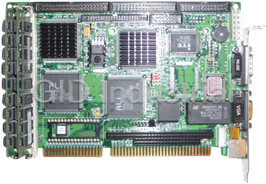
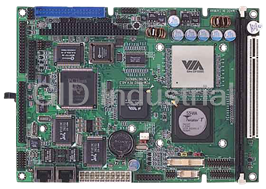
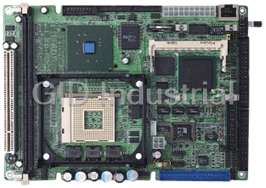
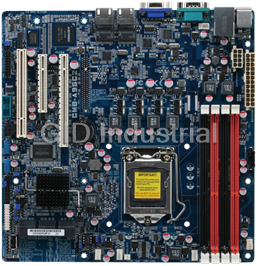
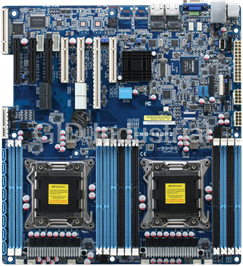
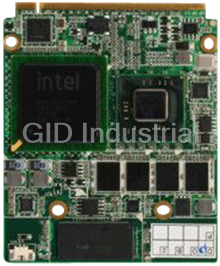




What they say about us
FANTASTIC RESOURCE
One of our top priorities is maintaining our business with precision, and we are constantly looking for affiliates that can help us achieve our goal. With the aid of GID Industrial, our obsolete product management has never been more efficient. They have been a great resource to our company, and have quickly become a go-to supplier on our list!
Bucher Emhart Glass
EXCELLENT SERVICE
With our strict fundamentals and high expectations, we were surprised when we came across GID Industrial and their competitive pricing. When we approached them with our issue, they were incredibly confident in being able to provide us with a seamless solution at the best price for us. GID Industrial quickly understood our needs and provided us with excellent service, as well as fully tested product to ensure what we received would be the right fit for our company.
Fuji
HARD TO FIND A BETTER PROVIDER
Our company provides services to aid in the manufacture of technological products, such as semiconductors and flat panel displays, and often searching for distributors of obsolete product we require can waste time and money. Finding GID Industrial proved to be a great asset to our company, with cost effective solutions and superior knowledge on all of their materials, it’d be hard to find a better provider of obsolete or hard to find products.
Applied Materials
CONSISTENTLY DELIVERS QUALITY SOLUTIONS
Over the years, the equipment used in our company becomes discontinued, but they’re still of great use to us and our customers. Once these products are no longer available through the manufacturer, finding a reliable, quick supplier is a necessity, and luckily for us, GID Industrial has provided the most trustworthy, quality solutions to our obsolete component needs.
Nidec Vamco
TERRIFIC RESOURCE
This company has been a terrific help to us (I work for Trican Well Service) in sourcing the Micron Ram Memory we needed for our Siemens computers. Great service! And great pricing! I know when the product is shipping and when it will arrive, all the way through the ordering process.
Trican Well Service
GO TO SOURCE
When I can't find an obsolete part, I first call GID and they'll come up with my parts every time. Great customer service and follow up as well. Scott emails me from time to time to touch base and see if we're having trouble finding something.....which is often with our 25 yr old equipment.
ConAgra Foods